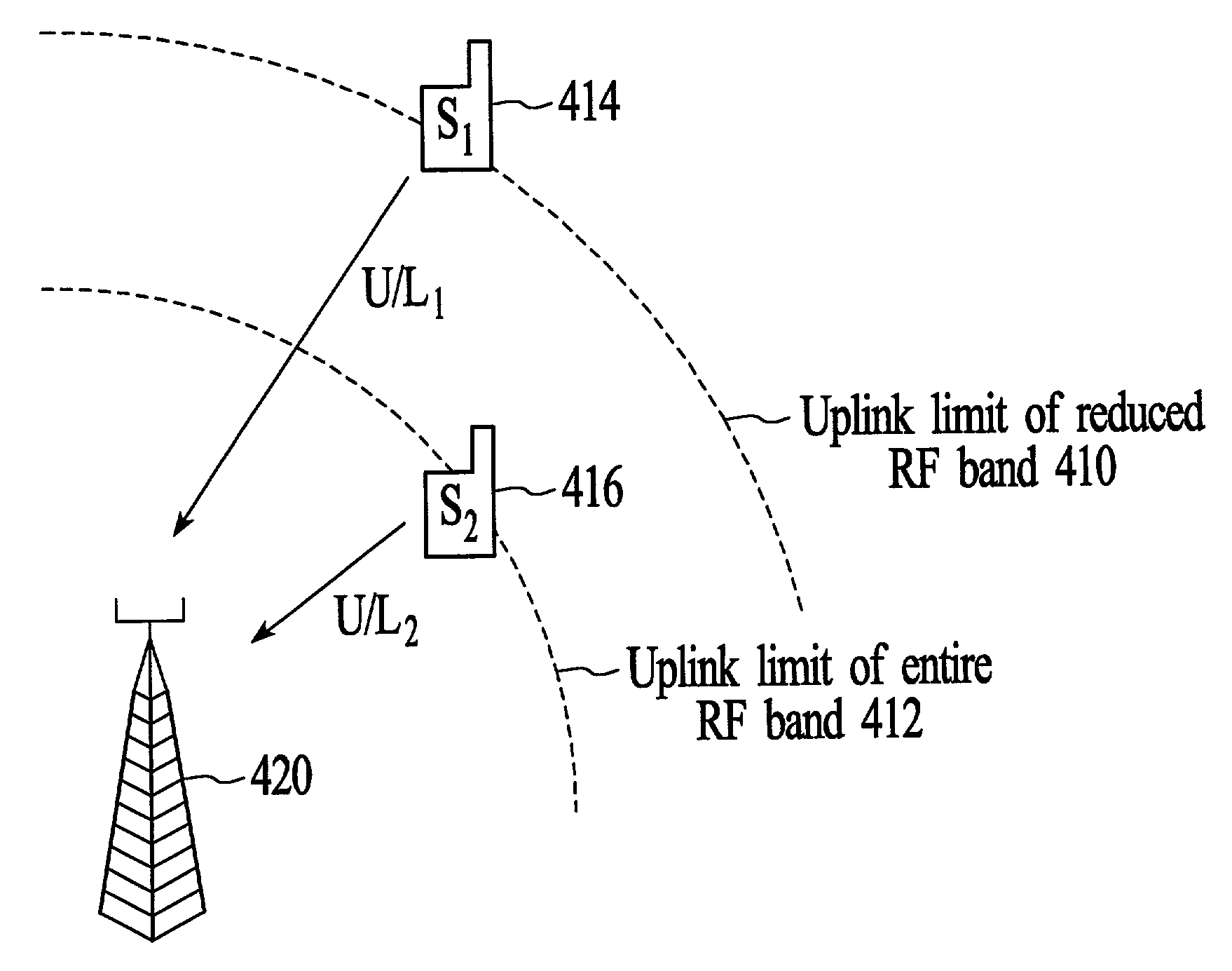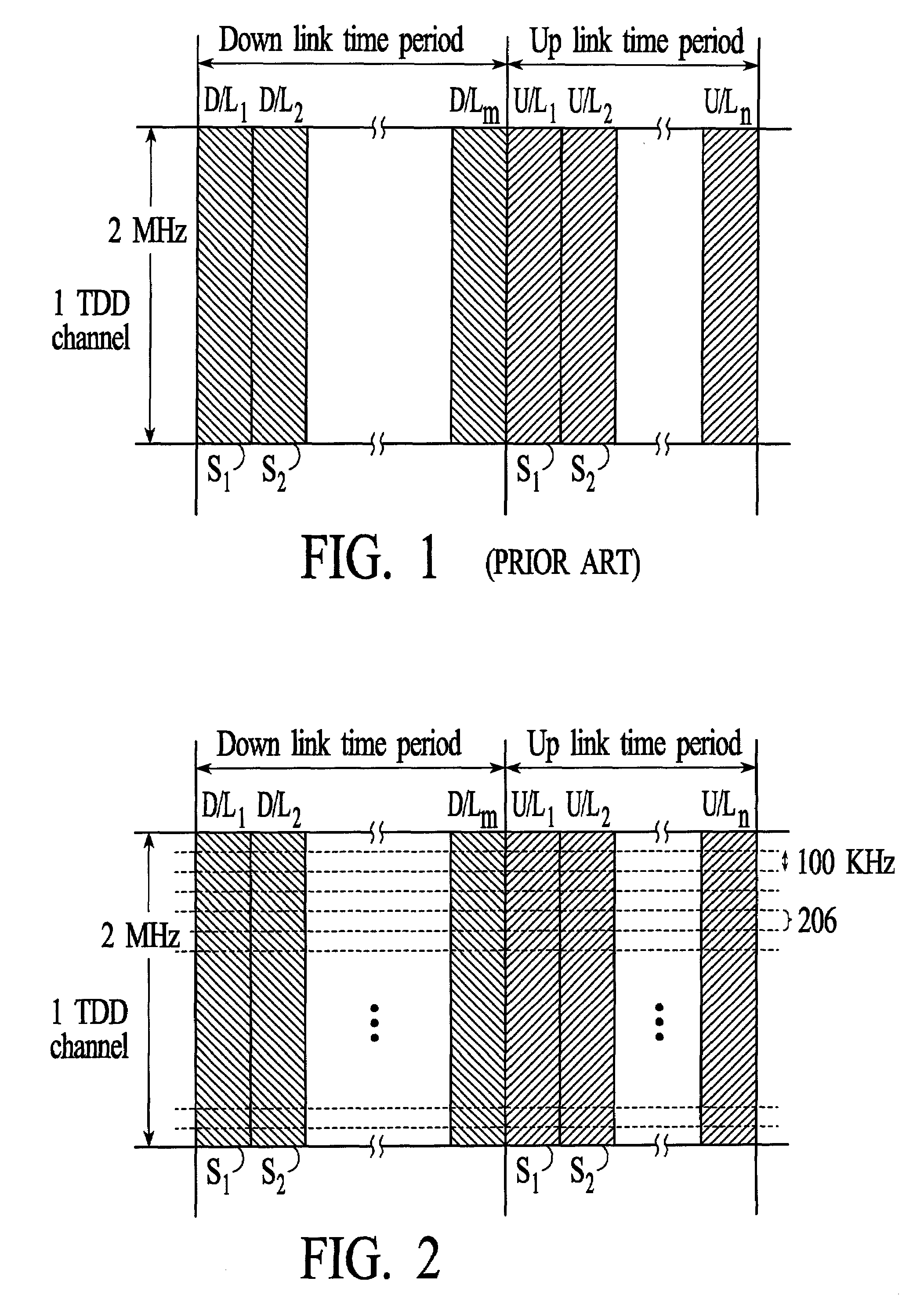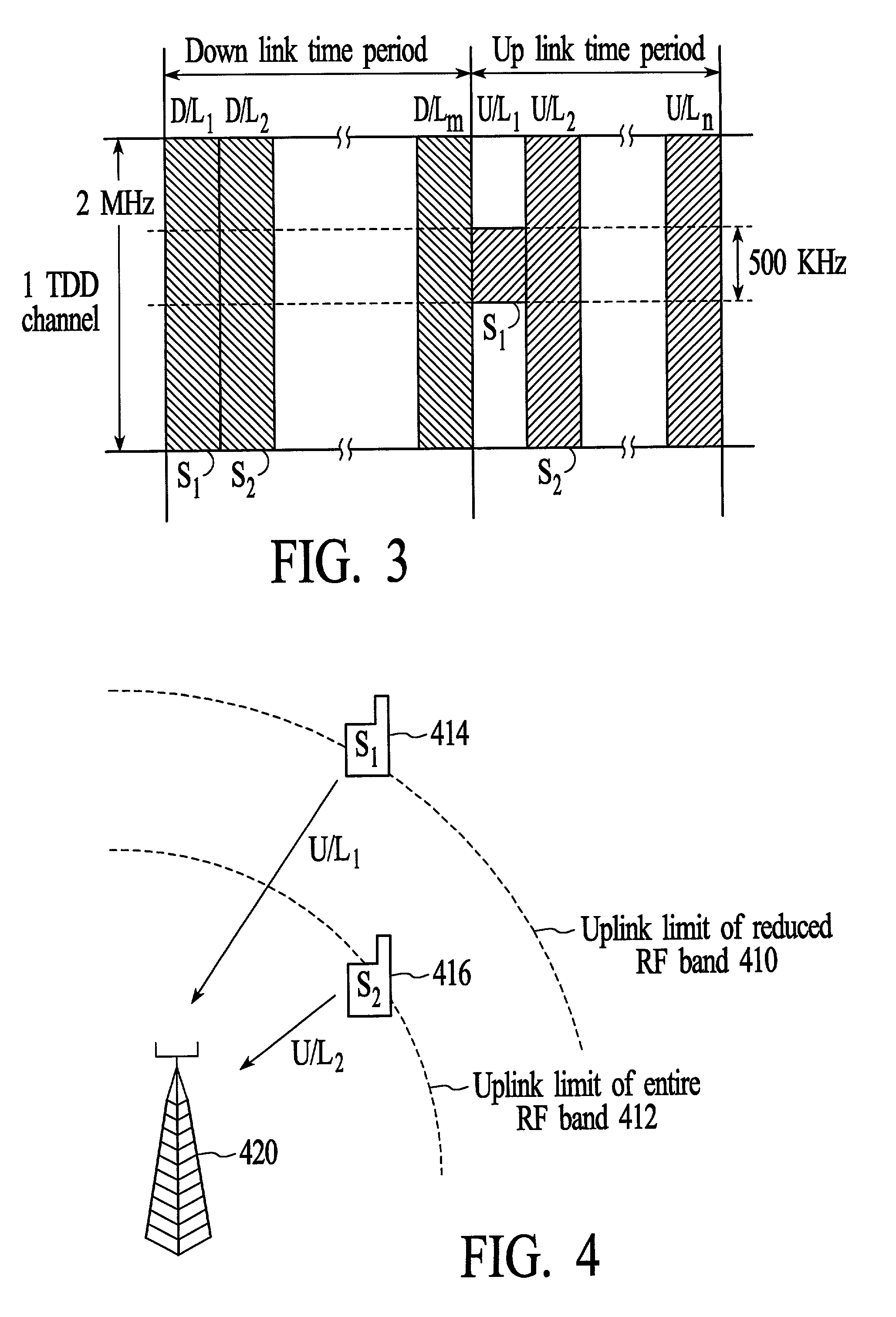Method and system for adapting a wireless link to achieve a desired channel quality
a wireless link and channel quality technology, applied in the field of wireless communication systems, can solve the problems of limited wireless frequency bandwidth, large thermal noise at the rf receiver, and large rf bandwidth, and achieve the effect of reducing the rf bandwidth of the uplink communication channel, and reducing the rf bandwidth of the uplink channel
- Summary
- Abstract
- Description
- Claims
- Application Information
AI Technical Summary
Benefits of technology
Problems solved by technology
Method used
Image
Examples
Embodiment Construction
[0038]As shown in the figures for purposes of illustration, the invention is embodied in a system and method for wireless communications that adapts a wireless communications link between a transmitter and a receiver by reducing the RF bandwidth of an uplink communications channel to achieve a desired channel quality. The RF bandwidth of the uplink communications channel is reduced when the desired channel quality is not achieved using the entire available RF bandwidth for uplink communications. Reducing the RF bandwidth of an uplink channel enables the uplink limit of a subscriber unit to be extended beyond what is possible when the entire available RF bandwidth is used for uplink communications.
[0039]FIG. 1 depicts the RF bandwidth of an example broadband wireless channel that is utilized between a transmitter and a receiver. In the example of FIG. 1, the channel has an RF bandwidth of 2 MHz that is located in the 2.5 to 2.502 GHz frequency range. As described above, the maximum s...
PUM
 Login to View More
Login to View More Abstract
Description
Claims
Application Information
 Login to View More
Login to View More - R&D
- Intellectual Property
- Life Sciences
- Materials
- Tech Scout
- Unparalleled Data Quality
- Higher Quality Content
- 60% Fewer Hallucinations
Browse by: Latest US Patents, China's latest patents, Technical Efficacy Thesaurus, Application Domain, Technology Topic, Popular Technical Reports.
© 2025 PatSnap. All rights reserved.Legal|Privacy policy|Modern Slavery Act Transparency Statement|Sitemap|About US| Contact US: help@patsnap.com



